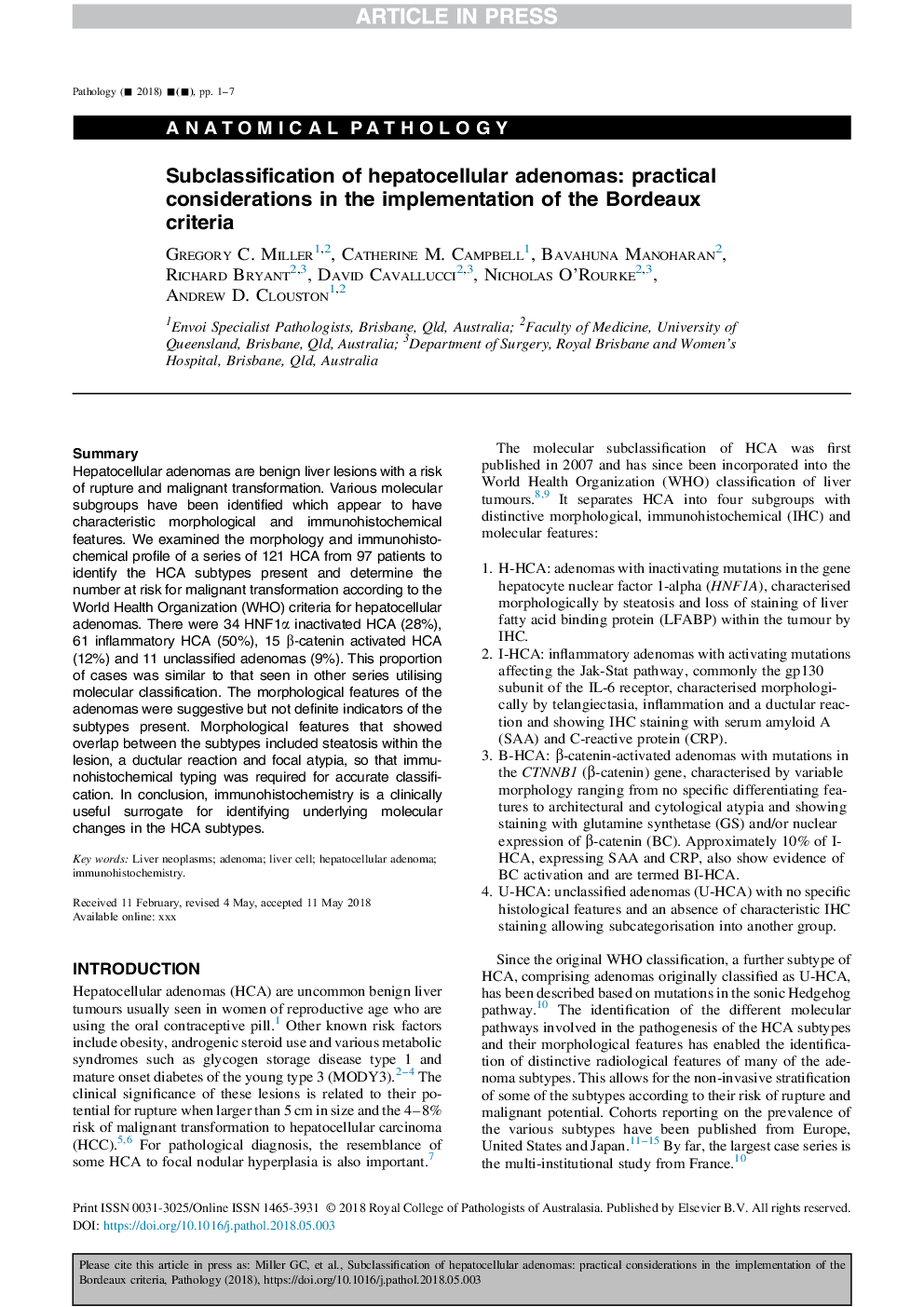| Article ID | Journal | Published Year | Pages | File Type |
|---|---|---|---|---|
| 10224977 | Pathology | 2018 | 7 Pages |
Abstract
Hepatocellular adenomas are benign liver lesions with a risk of rupture and malignant transformation. Various molecular subgroups have been identified which appear to have characteristic morphological and immunohistochemical features. We examined the morphology and immunohistochemical profile of a series of 121 HCA from 97 patients to identify the HCA subtypes present and determine the number at risk for malignant transformation according to the World Health Organization (WHO) criteria for hepatocellular adenomas. There were 34 HNF1α inactivated HCA (28%), 61 inflammatory HCA (50%), 15 β-catenin activated HCA (12%) and 11 unclassified adenomas (9%). This proportion of cases was similar to that seen in other series utilising molecular classification. The morphological features of the adenomas were suggestive but not definite indicators of the subtypes present. Morphological features that showed overlap between the subtypes included steatosis within the lesion, a ductular reaction and focal atypia, so that immunohistochemical typing was required for accurate classification. In conclusion, immunohistochemistry is a clinically useful surrogate for identifying underlying molecular changes in the HCA subtypes.
Related Topics
Health Sciences
Medicine and Dentistry
Forensic Medicine
Authors
Gregory C. Miller, Catherine M. Campbell, Bavahuna Manoharan, Richard Bryant, David Cavallucci, Nicholas O'Rourke, Andrew D. Clouston,
